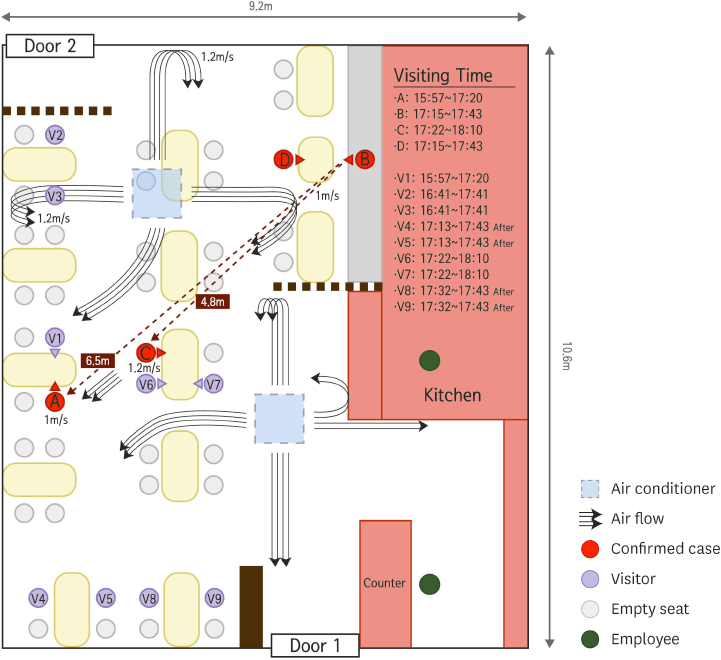A: Indoor dining can be risky, even for a short duration & distance beyond 6 feet/2 meters.
#StopSwappingAir
In a recent study from South Korea, a high school student was infected in a 5-minute window of time and sitting 20 feet away from the “index” case.
How do they know this with such precision?
While looking backward in time to trace transmission is something epidemiologists (aka “Disease Detectives”) live for, few places have succeeded in tracing COVID-19 so successfully as South Korea.
In this case, the mystery involved a high school senior testing positive for SARS-CoV-2 despite not traveling and no cases in the city for two months. Using digital contact tracing, specifically a platform that allows access to cellphone and credit card information of infected individuals, the contact tracers found via cellphone GPS that the student had briefly overlapped with a known case from a different city (traveling salesperson) who was eating in a restaurant.
➡️ They overlapped for only 5 minutes.
It gets better. Tracers went to the restaurant itself and were able to get CCTV footage. From this they could see that the two had never spoken or touched shared surfaces. But the air conditioning unit was on.
➡️ The student was sitting 20 feet (6.5m) away.
The researchers did a re-creation of the set-up in the restaurant and measured airflow. They found that the airflow created “a valley of wind” that carried small droplets or aerosols beyond the advisable 6 feet/2 meters of safe distance.
Those infected were sitting directly along the air flow from the air conditioner, while those with their back to the airflow were not infected. There were no windows or other ventilation in the restaurant.
So what can you do to protect yourself? The best current defense is to not put yourself in this situation. As Dr. Mike Osterholm says, we need to “Stop Swapping Air.”
This means:
➡️ Don’t be in an enclosed or indoor space with someone outside of your household or ‘pod’ regardless of whether masks are worn. Communicate and socialize virtually or outdoors at a distance.
➡️ Do not host a party, dinner or other gathering in your home.
➡️ Visit with neighbors from afar outdoors rather than inviting them into your home.
➡️ Skip any indoor activities that are not absolutely essential for your work or education. Work remotely if possible. This means not participating in or watching a choir concert, school dance, or indoor sports.
➡️ Shop online or use curbside pickup as much as possible. Do not go shopping for non-essential items or to browse.
➡️ For the holidays this means not having office parties, school concerts, and family gatherings beyond your household. Go caroling outdoors, sit across a fire pit from a friend, and HOLD OUT for next year.
BOTTOM LINE:
According to aerosol scientist Dr. Linsey Marr, “Eating indoors at a restaurant is one of the riskiest things you can do in a pandemic. Even if there is distancing, as this shows and other studies show, the distancing is not enough.”
Stay Safe and Stay Sane.
Love,
The Nerdy Girls




